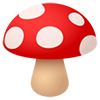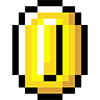-
Posts
4,595 -
Joined
-
Last visited
-
Days Won
34
Content Type
Profiles
Forums
Articles
Downloads
Gallery
Blogs
Everything posted by JoeViking245
-
While in the Arcade platform, go to Tools - Import - Manually Add Game This will bring up a 'blank' game. Add the Title, and in the Launching section, browse to your jumbogod,zip file. You can try to Search for Metadata. But you won't find anything. Click OK to save.
-
I believe it tells you somewhere onscreen how to do that. But I think you select the control/key and then press delete.
-
For VPX, just do the same as you did for FP (create a new "emulator") but change the references from FP to VPX. Run, "C:\Games\Visual Pinball\VPinballX.exe" -minimized -exit -play "%1%" Sleep, 10000 While WinExist("ahk_exe VPinballX.exe") sleep 700 Oh, and shouldn't need "Run, "dmdext.exe"....". FX3 might be a little trickier as I believe it uses a 'launcher' of sorts to open the table. So you'd need to figure out what to put in the line for "While WinExists...". This may be different (the exe or window Title to look for) for each Table.
-
LaunchBox and BigBox have separate controller mappings. Mapping one doesn't affect the other. So you need to map them individually. BigBox itself has separate Controller mappings and Keyboard mappings. In BigBox, it's in Systems Menu - Options. Near the bottom you'll see Keyboard Mappings and Controller Mappings. In LaunchBox, it's under Tools - Options - Game Controllers - Mappings.
-
It would be in ..\LaunchBox\Data\BigBoxSettings.xml <UseAllControllers>false</UseAllControllers>
-
For testing purposes, run the BezelLauncher setup, select your GameCube platform and then the emulator, then disable and click Save. Close the setup window. Launch a GC game. Is it indeed windowed? You should see the window title and the min/max/close buttons above 'the game'. For my graphics settings (in Dolphin), I have Aspect Ratio set to "Stretch to Window" and Fullscreen not-checked. In Advanced, the only thing I have checked is "Borderless Fullscreen" (don't recall if I ever changed it). If it's still not working correctly, (more testing), Exit LaunchBox, reset the scale to 100%. Restart the computer. Start LaunchBox, enable BezelLauncher for GC and reset the Orange Frame, Save and start a GC game. The game and bezel should be 'tiny'. Even at 100%.
-
Earlier you said you couldn't Run a file that is a shortcut. At the time I ignored that. I think now, times are a changin'. If you have a batch file located: D:\MyFiles\myBatchFile.bat ..and you create a shortcut in the same folder to that file, the file will show as D:\MyFiles\myBatchFile.bat - Shortcut To execute the shortcut in an ahk script, use: Run, "D:\MyFiles\myBatchFile.bat - Shortcut.lnk" ..adding the file extension .lnk (that's an L (ell). Not an i (eye). Short for LINK). Since your shortcut is already set to run as admin, this should work. And you shouldn't need to use "Run *RunAs". At the end of the batch file, add "pause" (without quotes). This will hold the command prompt window open until you press the 'any' key. If and when everything gets to working properly (fingers crossed), you'll want to remove that. Then, as a bonus, edit the shortcut file(s) (properties) and in the Shortcut tab, change Run to Minimized. That will then hide the command prompt window. Giving it that finishing touch. Your emulator settings look fine. The scripts have the file extension .ahk . If you have AutoHotkey installed, that file extension will be registered to it. When double clicking the file, it will open with your installed version of AutoHotkey. Not everyone has it actually "installed". So double clicking a file with a .ahk extension would do nothing (except ask you what application you want to open the file with). In my examples of creating an AHK script 'as an emulator', it was just easier to have them launch the script using AutoHotkey that comes with LaunchBox than to assume they have it installed. To use your installed version of AutoHotkey, replace the Application Path with the path to your installed copy of AutoHotkey.exe. Alternately, since the file extension .ahk is registered to AutoHotkey (that you installed on your system), you could replace the Application Path with the path to your script (.ahk file) and then remove the Default Command-line Parameters.
-
[Future] support for plugins is best found on that particular plugins' Support Page. The link to the support page can be found at the top of the page in which the plugin was downloaded. Here's a direct link to the Support Page for the Multi Monitor plugin you're referring to.
-
It looks like you have Dolphin running in fullscreen. Open stand-alone Dolphin (in LaunchBox, right-click a GameCube game and select Open Dolphin). Go to Options - Graphics Settings and un-check Start in Fullscreen. For Xemu, make sure you don't have "-full-screen" in the default command-line parameters. As for the test frame needing to be offset, to be centered, the above should fix that. If not, do you have you Windows Display Settings scale set to something other than 100%? The latest release of the plugin (V2.1.1) should [have] fix[ed] that.
-
IF the device can be disabled while VPX or FP is running (while it's still loading, actually), you can put the [full] command to disable-device in the emulators Running Script. The Running Script will execute whatever is in there as the emulator/game is being loaded. Since the disable-device command would happen real fast, it might be able to do-its-thing before the emulator gets loaded. You then add an escape sequence that will enable-device. If disable-device has to be executed before the emulator is even a 'thought' (i.e. the above doesn't work), I can think of 2 options. Add it to each table as an Additional App Create a new "emulator" that is a batch file (or AutoHotkey or PowerShell script or whatever flavor you prefer). This "emulator" will: send the command for disable-device start the actual emulator with the 'ROM' that LaunchBox will pass to it wait for the emulator to exit send the command for enable-device For option #1, you can add the Additional App(s) to all the games (tables) at once using this plugin. Option #2, you wouldn't have to worry about the additional app(s) when adding new tables. That all said, since you say disable/enable need to be ran as administrator, the 1st paragraph option would need to have the (AHK) Running Script call the batch file shortcut(s). Rather than just executing the command(s) in AHK lingo. Which shouldn't be an issue. Option #1 won't work. Option #2, the "emulator" will need to call the batch file shortcuts in step 1 and 4 to have them ran as administrator. (Similar to bullet #1) Can't have "the emulator" ran as admin because it would then run the actual emulator as admin. Which you DON'T want. There's a small thread here on the Forum dedicated to AutoHotkey scripts that's geared specifically to LaunchBox and emulators. When you have a little time, look through that and get a feel for how the AHK scripts are written. Then to learn more about a specific command (i.e. "SetKeyDelay"), simply Google "AHK SetKeyDelay" (without quotes). Note, this specific search, the 1st 2 results show in the links "AutoHotkey v1" and "AutoHotkey v2". You want the result for version 1 which is the version LaunchBox has integrated. Here's an example for Option #2 "creating an emulator" that's an AutoHotkey script.
-
If you used the Import MAME Arcade Full Set Wizard to import, on the How would you like to filter your games screen, if you left the Create Playlists section as default, it will have created a playlist of vertical games. On the left pane in LaunchBox, switch to Playlist and then scroll down to Arcade Vertical. Select all the games, then go to Tools, File Management, and select Export/Copy ROM Files from Selected Games to New Folder. Edit: The playlist is actually called Vertically Oriented Games
-
I believe it could. If the .m3u file and the 2 .cue files are in the same folder.
-
You might be able to change the absolute paths in the .m3u file to relative paths. If the files that the .m3u references are in the same folder as the .m3u itself (vs a subfolder thereof), you shouldn't need the paths at all.
-
.thumb.png.c9faf450e4d2b690a819048b18173f61.png)
Script requirerd to Start/Stop Mamehooker with MAME
JoeViking245 replied to Bullvine's topic in Troubleshooting
You may need to use a little more 'force'. Try this instead: $Esc:: { Process, Close, mamehook.exe } Also, is there anything else in the Running Script? -
.thumb.png.c9faf450e4d2b690a819048b18173f61.png)
Script requirerd to Start/Stop Mamehooker with MAME
JoeViking245 replied to Bullvine's topic in Troubleshooting
A quick search on the subject indicates that people will either start Mamehooker when LaunchBox/BigBox starts up (and leave it running) or they load and 'kill' respectively on a per game basis. To load it when LB/BB starts up, got to Tools - Options - Startup Applications and add it there. For per-game, you'd add an Additional Application to the game(s). Edit the game and in the Additional Apps section, add it there and check the box Automatically Run Before Main Application. If you have a bunch of games that you want/need to add this to, you can use the Bulk Add Additional Applications plugin to do them all at once. Select all the games you want to add this Additional App to, then run the plugin. Edit your MAME emulator and in the Running Script section, add $Esc:: { WinClose, ahk_exe mamehooker.exe ;WinClose, ahk_exe mame.exe } Because we're adding an escape sequence here, you may need to un-comment the 4th line. In lieu of adding per-game Additional Apps, IF Mamehooker doesn't need to be running BEFORE MAME gets launched (i.e. it can safely be started after MAME is already running), to have it load when a game using MAME is launched, you could add the following to the top of MAME's Running Script. Run, "full/path/to/mamehooker.exe" -
AutoHotkey can't Send any controller commands. Only keyboard and mouse. If that "move" in the emulator can be done with a mouse (or arrow key? Not sure what you mean by 'move once'), then you could. ; wait until Infuse process is running Process, Wait, Infuse.exe ; give a couple secs to make sure it's fully loaded Sleep 2000 ; 'press' Right-Arrow key Send, {Right} ; ALTERNATE ; move mouse to screen coordidinates x=1000, y=700, 0=move-real-fast ; Mousemove, 1000, 700, 0 ; 'press' "A" Send a
- 9 replies
-
- 2
-

-

-
- zeebo emulation
- zeebo emulator
- (and 3 more)
-
Personally, I have no idea. My question is, is it worth it for all 3 of the games (the only 3 games) it supports?
- 9 replies
-
- 2
-

-

-
- zeebo emulation
- zeebo emulator
- (and 3 more)
-
In LaunchBox, edit the MAME emulator LaunchBox setup for you. Since you've added the paths to rompath in MAME itself, in the default command-line parameters, remove -rompath %romlocation%
-
The BigBox main display will only show on a single display (monitor/tv) that you set in the System Menu. Also, the 'Primary Screen' you select to use has no direct ties to the "Main Display" you set in Windows. It's either monitor #1 or monitor #2 (or #3 or #4 etc.). There are no command-line parameters available to tell BigBox to start on a specific monitor. To start BigBox on a specific display of your choosing (without launching it and changing it in the UI), you'd need to modify its settings file by changing the value for the Primary Screen, save and close, then start BigBox. This could be 'automated' by creating a PowerShell Script, batch file, AutoHotkey script or other medium of your choosing that would do the change, save, then start BigBox. Create 2 of them, one to start it on your Apple TV and another to start it on your ultrawide. Regarding it not scaling properly on the ultrawide, that's out of my area of expertise. But one thing I have read about is, if you have the displays' Scale (in Windows Display Settings) set to something other than 100%, you could experience something along those lines.
-
Change your (2nd) variable from %%i to %%f (I did not look at any other parameters to verify they're correct)

.thumb.png.c9faf450e4d2b690a819048b18173f61.png)



